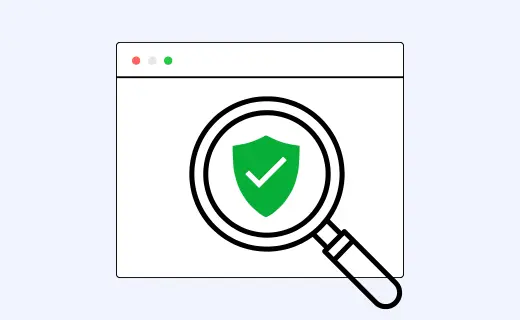About article
10 Things You Need to Know About ISP Whitelist

When considering email communication, all your emails need to reach their destination safely. One way to do this is through an ISP Whitelist. An ISP Whitelist is a list of email users recognized as safe by the ISP so that their legitimate emails will not be marked as spam.
The concept behind ISP Whitelists, their purpose, and getting on one could exponentially improve your email deliverability and communication endeavors.
In this article, we will explore 10 essential elements surrounding ISP Whitelists to help you extract the most value from your email strategies.
What is an ISP Whitelist?
An ISP Whitelist is a list filled by the ISPs and includes the list of email senders that the ISPs believe to be reliable and trustworthy. An email from these senders cannot be identified as spam and will be easily transported to the recipient's inbox. To stand on this list, the senders must adhere to fundamental guidelines and maintain a good sending reputation.
Criteria for whitelist inclusion comes in various forms, such as sender authentication and low rates of complaints. The whitelist bestowed upon a reliable ISP can significantly bolster email complementing, making it a necessity for businesses dependent on email marketing and communication.
Why is an ISP Whitelist Important?
The principal function of an ISP whitelist is to improve email deliverability by differentiating proper senders from potential spammers to receive emails from legitimate sources directly in the recipients' inboxes instead of being directed to the spam box.
An ISP whitelist also curtails the inflow of unwelcome, dangerous poisons forwarded through emails, protecting users from phishing, scamming, and other nasty actions. For a business, being on an ISP whitelist means a greater probability of final email delivery, enhancing the effectiveness of any communication or marketing campaign.
Criteria for Whitelisting
Generally, the entry criteria to get into an ISP allowlist revolve around the sender's reputation and follow strict best practices for sending emails. The ISPs thus rate international sales and penetration of a product or service based on the regular volume of emails from the sender, low complaint rates against the sender, adherence to email authentication standards such as SPF and DKIM, and the engagement metric.
In addition, mail senders need to be able to show a history of good email-sending practices that are in line with ISP guidelines. Unless these criteria are constantly met, it will then become easy to get and stay listed on any ISP whitelist—gaining recognition, therefore, from ISPs and recipients that your emails are of genuine interest and legitimacy.
How to Get on an ISP Whitelist
Getting into most ISP whitelists involves some discretion on the part of the ISP after submitting full details about your email-sending practices. This information includes data on your email service provider details, sending IP addresses, and authentication methods like Sender Policy Framework (SPF) and DomainKeys Identified Mail (DKIM). Some ISPs may also want to see a history of your email-sending behavior to gauge your reputation as a sender.
This means that the application process—in its essence—has a much broader reach as it becomes an arena where you prove yourself to be a valid sender, promising to follow the best practices in email communication. The deliverability of your email can increase significantly if you are successful with the process, which includes getting approved for the ISP whitelist.
Reputation Monitoring
Once you are on the ISP whitelist, it is essential to maintain a high positive reputation with the sender. Occasionally, ISPs check how sender-whitelisted senders conduct themselves and whether they align with their standards. For instance, they will track spam complaints, bounce rates, and reflective recipient engagement metrics.
It is recommended to regularly check such metrics for any issues that may be imminent and may harm your reputation or your place on the whitelist. Proactively managing problems, such as high complaint rates or low engagement, helps maintain a good reputation with ISPs. It leads to a higher probability that your emails will effectively land in people's inboxes.
Email Authentication

Email authentication with EmailGuard
Email authentication is critical to being on any ISP whitelist. It provides protocols for encrypting an email to make sure that it came from whom it says it did: SPF (Sender Policy Framework), DKIM (DomainKeys Identified Mail), and DMARC (Domain-based Message Authentication, Reporting, and Conformance). SPF lists mail servers authorized to send emails on your behalf.
DKIM digitally stamps every email you send to prove it has stayed the same. DMARC builds upon SPF and DKIM, adding policies and reporting on how best to monitor and forcefully apply email authentication policies. These authentication methods positively contribute to a good email reputation and deliverability and prove the legitimacy and security of your emails to the ISPs.
Regular Maintenance
Staying on an ISP whitelist requires consistent management and improvement of your email-sending practices. Regularly clean your lists of inactive and invalids, as this will keep bounce rates low and engagement metrics high. Pay special attention to the performance of your emails regarding opens and click-through rates—all indicators of engagement by recipients.
Ensure that issues, like high complaint rates or spam reports, are resolved quickly to maintain the sender's rare reputation. Keep in mind changes to ISP policies and email authentication standards to adhere to them. In this way, by continuously monitoring and optimizing your email practice, you'll be able to make the presence of the ISP whitelist more perpetual and ensure maximum deliverability for emails.
Benefits of ISP Whitelists
Staying on an ISP whitelist is beneficial. The first one being, the enhancement of email deliverability, which results from the lower rate of claiming a valid email as junk. This will lead to higher open rates and better engagement from recipients, ultimately improving the effectiveness of email marketing campaigns.
All the benefits above for an online business using an ISP whitelist include increased efficiency in communication and ROI achieved through efforts put into email marketing. Thus, in the whole spectrum, an ISP whitelist lends practical help to enhancing email deliverability and sender trust in the digital world.

ISP Whitelist Challenges
Although there are multiple benefits of IP whitelisting, let's take a look at the challenges. First, getting your IP allowed can go through a very rigorous and sometimes time-consuming application process, where you need to document every bit of your email-sending practices and infrastructure. After being allowed, much work is involved in keeping your sender's reputation up-to-date and ensuring you comply with their standards.
Other ISPs may not operate on whitelisting schemes, thus limiting the options through which deliverability can be enhanced. However, changes to ISP policies or email authentication standards can change your whitelist status. As a result, some adaptation is required at all times.
Alternative Solutions
Other ways to boost email deliverability include robust email authentication protocols like SPF, DKIM, and DMARC. These will go a great distance toward proving whether or not a sender is authentic and will keep spoofing from occurring. Mail to clean, engaged subscriber lists and clean a list frequently by deleting inactive subscribers to maintain the bounce rate at a minimum for improved email deliverability.
Use a reputable email service provider with a solid history of deliverability to increase your chances of inbox delivery. Engage your subscribers with valuable content and encourage interaction through personalized emails toward better open rates and engagement metrics. It's more about creating value, diversifying the strategies, and focusing on best practices to optimize email deliverability even without direct ISP whitelist inclusion.
Conclusion
Knowing how ISP whitelist functions and making effective strategies based on these can be highly instrumental in the success of your email communications. You can increase your deliverability chances with email authentication standards, maintain a good sender reputation, and keep track of email performance metrics. Though ISP Whitelists demonstrate several benefits through enhanced deliverability and credibility of senders, steering through their challenges calls for diligence on your part and needs proactive management.
Complementary approaches can be developed on resilient authentication protocols and strategies for engaging content to help expand remedial initiatives toward optimized email deliverability. All said and done, it is how much businesses stay updated on changing ISP policies and are aware of best practices in industry circles that would go a long way toward making a killer impact through their email marketing campaigns.
Everything you need to power up your email game in one place.
Start now for free. No credit card required.
